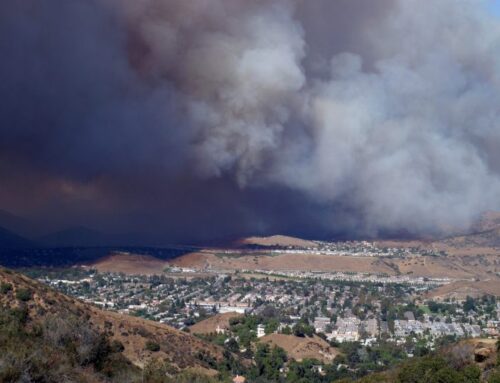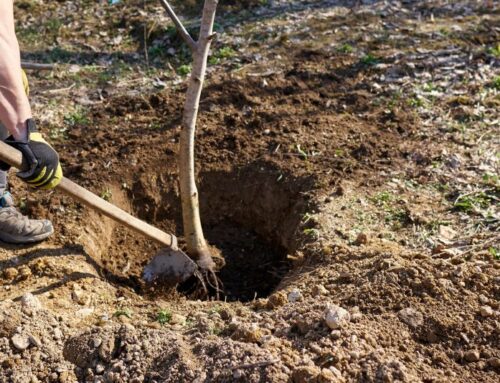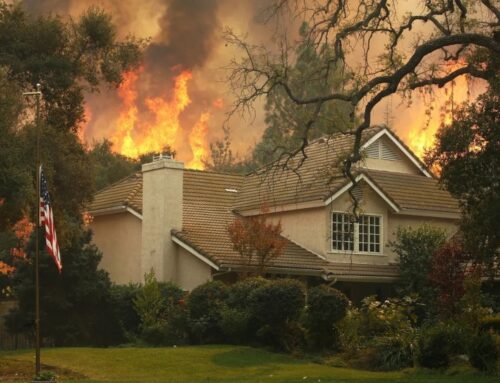
It’s wintertime and you’re probably tucked up in your home with a cozy fire, hot chocolate, and a good book. But what about the trees outside? The cold winter temperatures can seem unbearable, but even in this frigid weather, trees are still alive and well! How do they survive in such harsh conditions? Let’s take a closer look!
What do Trees Do in the Winter?
Unlike animals, trees can’t scurry away into cozy dens or warm nests to take shelter from the cold. They simply must stay put and put up with whatever Mother Nature throws their way. In the battle to survive harsh winter conditions, trees have evolved a remarkable array of strategies. In the upcoming sections, we’ll uncover the tools that trees use to win the fight for life, including cold hardiness, winter dormancy, and cellular modifications. By understanding the resilience of trees in the cold, we can appreciate their strength and adaptability, as well as understand their needs to be better tree stewards.
Cold Hardiness
The secret to how trees can thrive in cold climates lies in their ability to become “cold hardy.” A tree becomes cold hardy when its cells produce antifreeze-like compounds known as cryoprotectants. These compounds help trees withstand freezing temperatures by reducing the number of ice crystals that form inside cells, which would otherwise cause them to rupture and die. Additionally, some trees also have thick bark that acts as insulation against extreme temperatures. For trees that retain their foliage, the overlapping leaves trap air and also act as insulation, just like how we’d wear a sweater to keep warm!
Dormancy and Hibernation
Another key factor in a tree’s survival during the winter months is dormancy. When temperatures drop below certain levels, many types of deciduous trees enter a state of dormancy where they stop producing leaves and flowers until more favorable conditions return. Similarly, evergreen conifers may go into a form of hibernation known as “winter sleep” where they slow down their metabolic rate and put all their energy into surviving the cold season.
Changing Cell Composition
Last but not least, trees change their cells to minimize cold damage. We can’t see these cellular actions, but here’s what trees are secretly doing:
Lower Water Content
Water expands as it freezes, and ice crystals are like daggers with their jagged, sharp edges. Both of these are bad news for cells and cell structures because ice may puncture and burst through. A simple strategy to avoid this is to simply have less water. As trees enter winter dormancy, they need less water anyway, so trees learned to get rid of that excess water!
Have More Proteins and Pectins
Ok, so the cells now have less water and less ice, which is great! But the bad news is, now there’s all this empty space that can cause cell collapse. What can be done? Well, trees fill up some of the space with proteins and pectins. Think of pectins as plant “glue”, it’s what makes jam set. These proteins and pectins reinforce cell structure and also have the added benefit of restricting the size of any ice crystals that form, reducing ice damage.
Have More Unsaturated Fats
Cell membranes are mostly made of saturated fats – think butter. And how does butter feel when it’s cold? Well, it’s really hard and stiff. If cell membranes get hard and stiff, particles can’t move through as well and metabolism is hindered. The solution? Change those saturated fats into unsaturated fats, something like oil. Think about how when oil goes in the fridge, it still stays fluid. This same fluidity helps trees function in cold temperatures.
What Happens When They Can’t Take It?
Try as they might, trees can’t win against the brutal winter wars every time. When trees can no longer withstand winter temperatures and storms, they often experience various forms of damage. Frost cracks, caused by rapid temperature changes, may appear on the trunk as vertical bark splits. Ice accumulation during freezing rain can weigh down branches, leading to breakage and failures. Heavy snow or wind can also break branches or even uproot entire trees, posing hazards to property and individuals.
As winter progresses, admire the silent resilience of trees, but also stay vigilant and watch for signs of tree damage. Promptly address hazardous tree issues through pruning or, if necessary, removal to help mitigate potential dangers and maintain a safe environment.
What Can You Do to Protect Your Trees in the Winter?
While trees may stand stoically still to endure the harshness of winter, we can lend a warm, helping hand to assist in their survival. By taking proactive precautions, not only can trees better survive, but we can also prevent potential tree and property damage.
- Mulch around the base of trees to regulate soil temperature and protect roots.
- Wrap the trunks of young or susceptible trees with burlap or tree wrap to insulate and prevent frost cracks.
- Prune dead or weak branches before winter storms to help prevent breakage.
- Water properly in the fall so they enter winter well-hydrated, enhancing their resilience.
- Inspect regularly for pests or diseases and treat as needed to enhance tree health.
We can appreciate nature’s resilience and resourcefulness by understanding the remarkable adaptations that enable trees to survive harsh winters. However, it’s also important to recognize the potential damages when trees succumb to winter challenges. By implementing proper tree care, we can contribute to the safety and well-being of both trees and our communities, ensuring that we can enjoy the winter wonder of trees.





